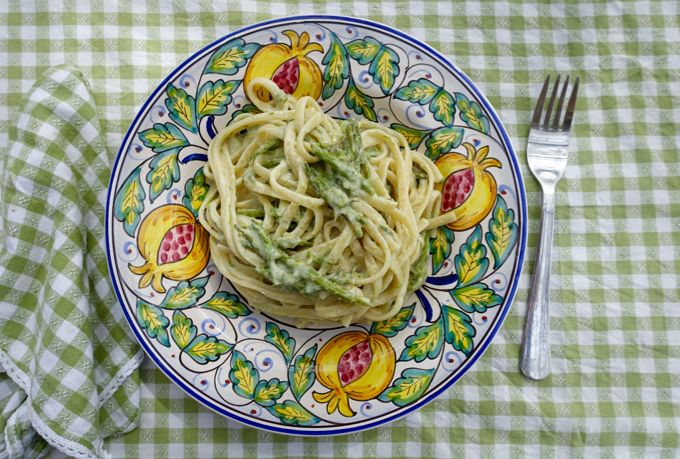
I’m definitely a multi-tasker. It’s rare that I do just one thing at a time. Even when I’m writing, (which by nature is immune to multitasking) I’m definitely thinking ahead: can this recipe work in a book? Should this restaurant review be part of my apps?
Even when I walk, I’m doing a few things at once (which can be kind of dangerous in Rome). Since walking is my preferred mode of transportation in the city, it’s when I get a chance to catch up on my podcasts. And of course I’m also busy taking photos, posting on snapchat and….. watching out for traffic, cobblestones and tourists on Segways.
When I spend time at our home in Umbria it’s the same thing. Even though in theory I’m taking time off, rarely do I head off for walk without a purpose. It might be in the direction of the next village for a cappuccino. Or along the road to pick blackberries. But my all time favorite multitasking is to forage for wild asparagus.
I guess I like it so much because even though I’ve definitely got the walking part down, I do keep getting better and better at the foraging part. It’s a challenging walk, but not challenging in any iron man kind of way. The walking part is more of an amble. But the stalks of wild asparagus are HARD to find. Each year, though, I manage to find more and more. I used to think that it was the weather, but now I can safely (and proudly) say I’m definitely getting better at it.
This past weekend I headed out into the woods with my little asparagus picker (it’s a special tool that I thought which was only available in Italy but is, of course, available on Amazon) and came back with almost a kilo of asparagus. It took me 2 hours to gather this much, which makes you understand why they cost so much in the markets in Rome.
One recent thing I’ve learned about wild asparagus (in addition to being able to spot them amid the underbrush) is that once in hand, they benefit from a good soaking. My neighbor Marisa explained to me that she nips off a bit of the woody stem, and sticks them in a big bucket of water at least overnight, and sometimes for up to two days. This allows the otherwise spindly and tough spears to plump up, and become a bit more tender.
But even with an overnight soak, I’m always amazed (and disappointed) how much gets thrown away. Last weekend, after I finished trimming away the tender part of the stalk , and cutting them into 2 inch pieces, I only had a small bowl full. While my pile of woody stems took up the whole counter.
My trick for not letting all that foraging work go to waste is to use the stems to make a broth that not only acts as the pasta cooking water, but also goes into the final pasta sauce, giving the finished pasta a triple asparagassy whammy.
Another trick I recently learned has nothing at all to do with Italy, Umbria or asparagus. When I was in New York last month my friend Sara prepared one of the recipes from my book, Pasta alla Romana. When I tasted it I couldn’t believe how good – and better? – it tasted than when I made it. Then I figured out her trick: she added butter. I guess it’s a general restaurant trick, but I’ve decided to adopt it on my own. At least when it serves my purpose. (And when making Asparagus Pasta I figured it was only one step away from hollandaise sauce which is allowed on asparagus and which is practically all butter, right? )
Since I know not everyone has access to freshly foraged wild asparagus: yes, you can substitute thin regular asparagus. It won’t be quite the same, but it should be pretty great anyway. I used one of my favorite brands of pasta, which also made a huge difference, and that you can get here and requires no foraging what-so-ever.
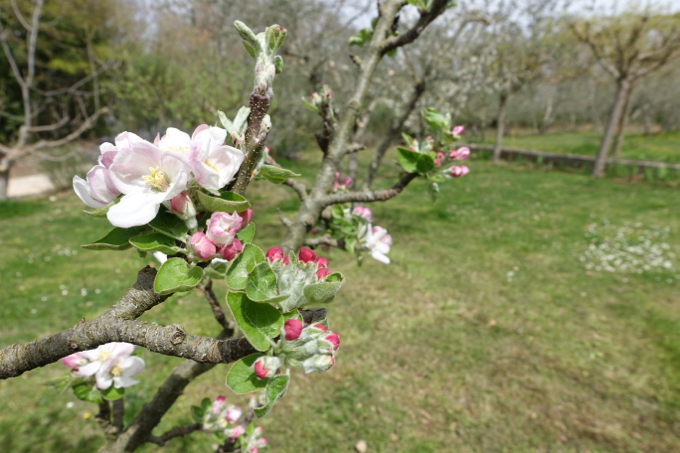
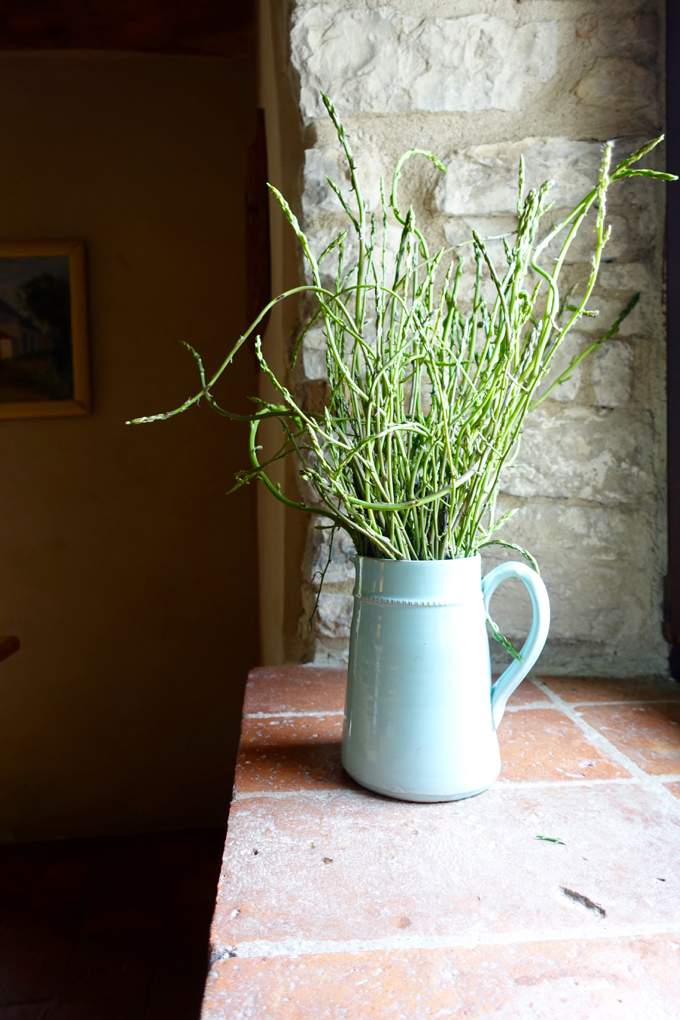
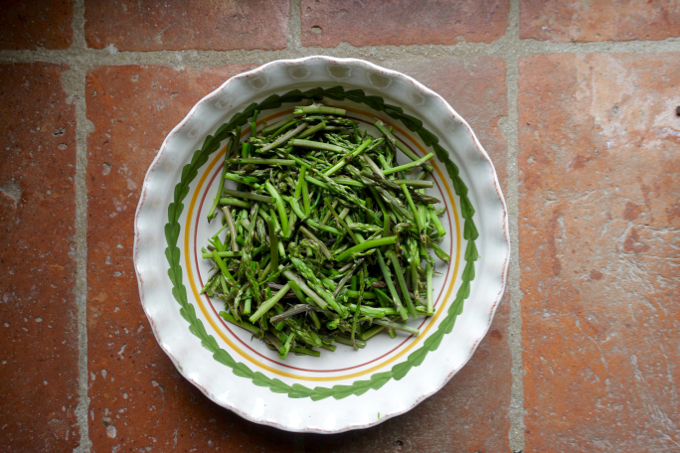
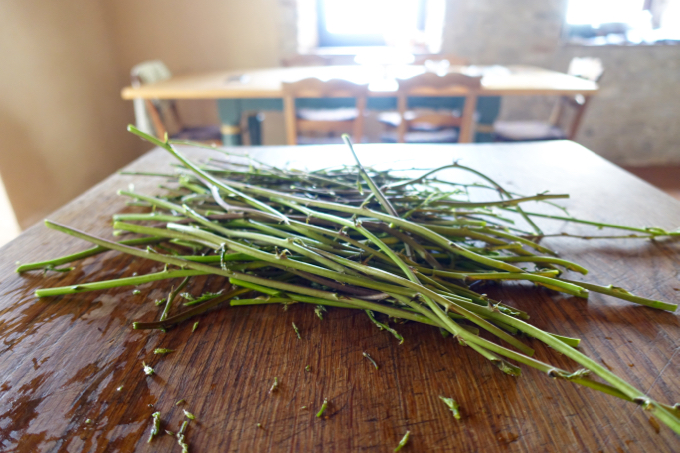
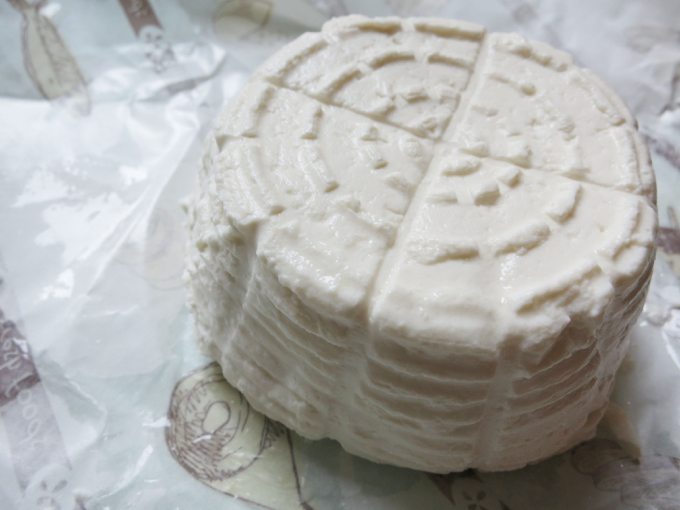
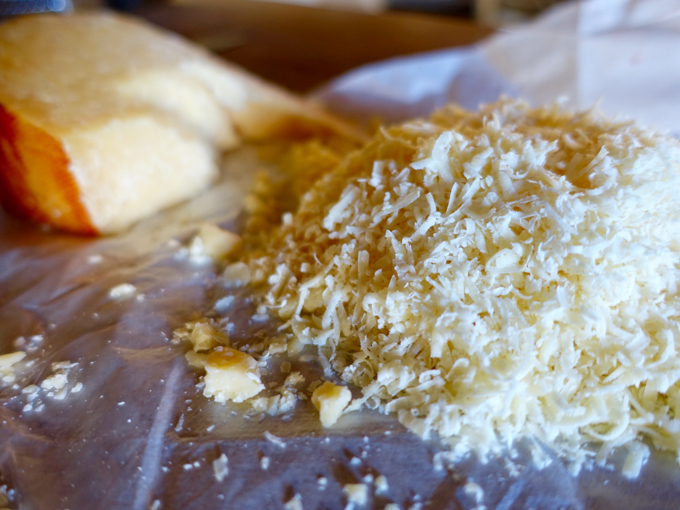
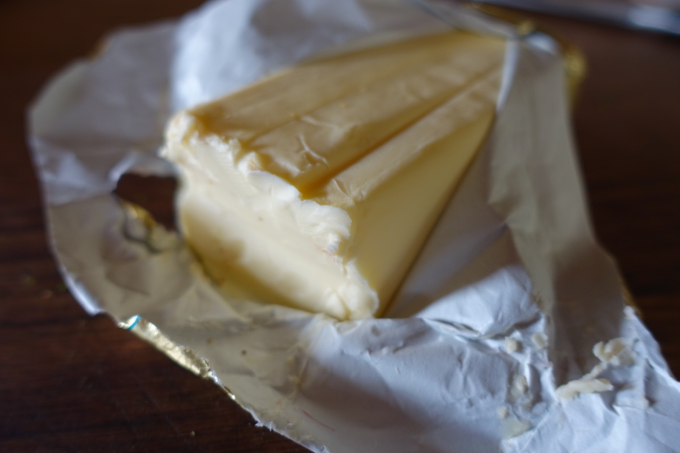
wild asparagus {pasta}
Prep
Cook
Total
Yield 4 -5
Ingredients
- 1 kilo wild asparagus
- 500 grams/ 1 pound linguine
- 1 small shallot
- 2 tablespoons olive oil
- 2 tablespoons butter
- 1 cup ricotta
- 1/2 cup grated parmesan cheese
- salt
Instructions
- Trim the asparagus by separating the tough woody stem from the tender tips. It’s hard to say how much, because each spear is so different. But there will probably be a lot that is very woody. Set the woody stems aside. And cut the tender parts into 2 inch pieces and set aside
- Chop the shallot finely and add to a large frying pan with the butter and olive oil. Heat gently, over medium heat, until the shallot is tender. Add the asparagus tips, a tsp of salt and about a cup of water. Stir and cook until the asparagus are just tender and most of the water has boiled away. About 6 to 10 minutes or so. Turn off the heat.
- Bring a large pot of salted water to boil. Add the woody stems, cover, and let simmer for 20 minutes. Drain, reserving the water and throwing away the stems. Bring the asparagus water back to a boil, and add the pasta.
- In the meantime, in a small bowl, stir the ricotta with the grated cheese until smooth.
- When the pasta is nearly done, scoop up a ladle full of the asparagus/pasta water, and stir it into the cheese mixture. It should be a creamy consistency.
- When the pasta is al dente, drain, reserving 2 cups of the cooking water (more than you will need, but better to err on the side of too much).
- Add the drained pasta to the frying pan with the asparagus, and turn the heat on. Stir well, heating and adding about a cup of the reserved water. Cook over heat for about 2 minutes to let the flavors come together and the pasta finish cooking.
- Turn off the heat and add the cheese mixture, stirring and adding more pasta water if it seems to dry. Taste and correct for seasoning.
- Serve.
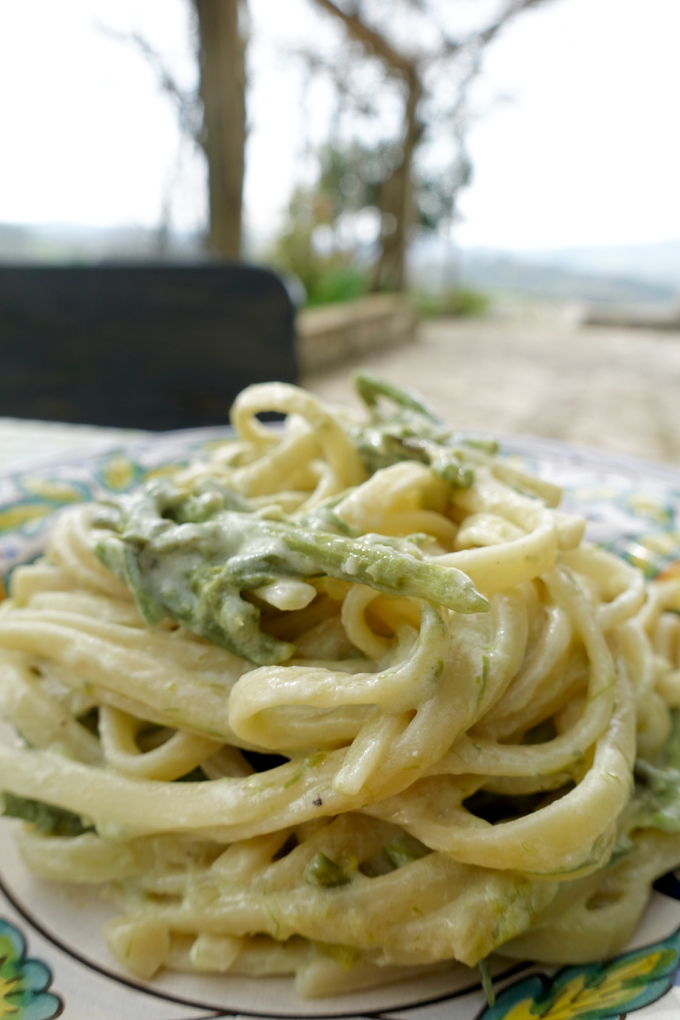
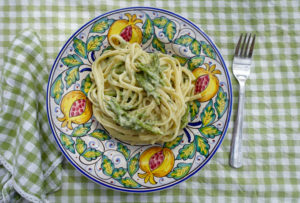
that sounds pretty fantastic. I’d like to share with you what my husband did just the other day with a very similar recipe. He puréed some of the cooked asparagus and used part of that liquid to make green pasta and the remainder as a bit of added liquid for the sauce. It was delicious and also quite beautiful.
Thank you so much for your wonderful posts and all the multi-tasking you do to bring us such great information and insights, we appreciate it.
Your recipe sounds delicious!
Would you show us a picture of the asparagus before it’s cooked? I read the words ‘wild asparagus pasta’ out loud and my husband said – yes please!
There are three photos of the wild asparagus before it’s cooked. The vase is full of them, whole. Then there is a photo of the tender parts, in a bowl (uncooked) as well as the pile of woody stems (also uncooked).
Well Elizabeth, as Julia C. used to say “everything is better with butter”…and Italian butter is amazing stuff…if you can find it here it costs around $15.00/lb. Your recipe is spring on a plate! Delish! Will have to make it with our local asparagus (not wild, unfortunately), next month!
Agreed! More butter, more better.
Lovely! I wish we had wild asparagus. I do add butter to my pasta every now and then. A little luxury 🙂
I’ll send you some asparagus if you send me some of that wild garlic stuff you were harvesting!
Is that plate from Ceramiche Sberna?
Yes, it is!
I am visiting Florence in December. I need to make a trip to Deruta!
Yes, make a trip to Deruta! But also? One of the shops I work with there may be opening a store in Rome. Stay tuned!
Will do!
You are an inspiration! The days seem to race by as each of us multi-tasks. It is the simple pleasures of getting back to the roots of good eating that grounds us. Thank you!
That plate is so charming with the pomegranates!
Thank you!